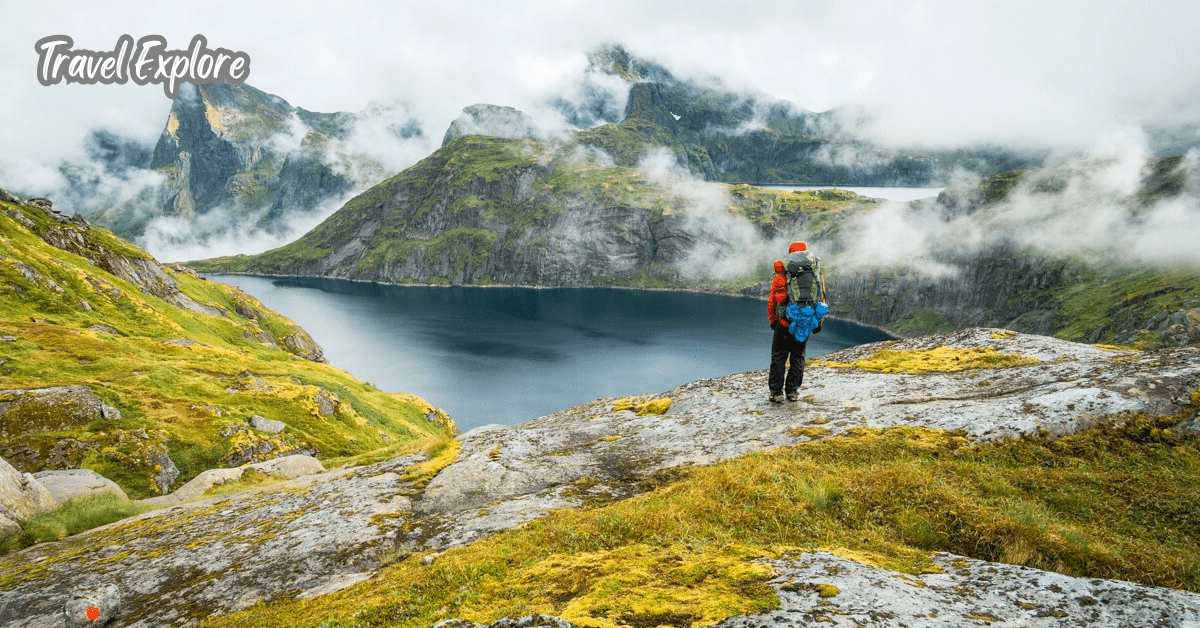What Type of Footwear is Best for Hiking and Camping?
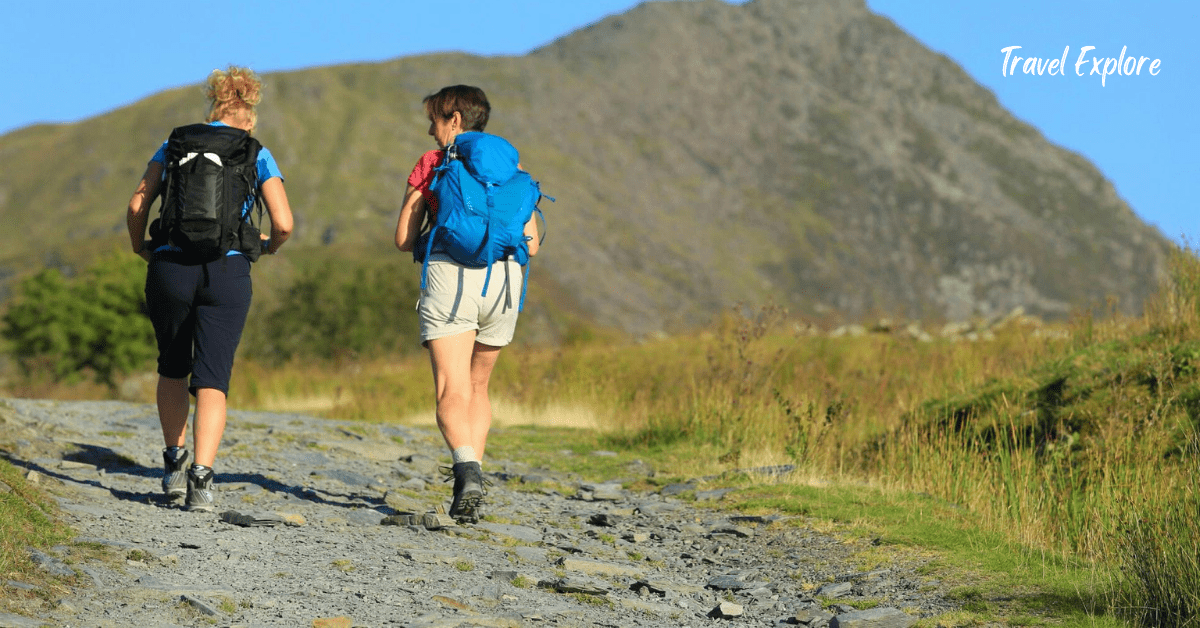
Hiking and camping are adventurous outdoor activities enjoyed by many enthusiasts around the world. Whether you’re trekking through rugged mountains or navigating dense forests, having the right footwear is crucial for a successful and comfortable journey.
In this comprehensive guide, we’ll delve into the various types of footwear best suited for hiking and camping, considering factors such as terrain, weather conditions, and personal preferences.
Understanding the Terrain
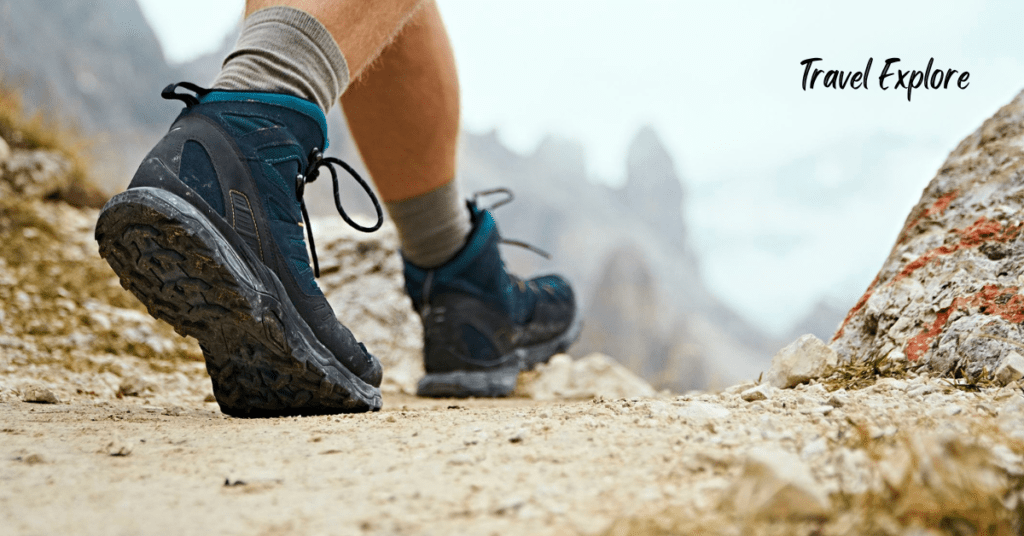
One of the primary considerations when selecting hiking and camping footwear is the terrain you’ll be traversing. Different terrains demand different levels of support, traction, and protection.
Rocky Terrain
Rocky terrain presents a unique challenge for hikers and campers due to its uneven surface and potential for slipping or twisting an ankle. When it comes to selecting the best footwear for navigating rocky terrain, durability, stability, and protection are paramount.
Ideally, hiking boots are the footwear of choice for rocky terrain. These boots typically feature sturdy construction with a thick, rugged sole that provides excellent traction on uneven surfaces. Look for boots with a high ankle collar for added support and stability, helping to prevent ankle injuries on rocky trails.
Additionally, waterproof or water-resistant materials can help keep your feet dry and comfortable, especially if you encounter streams or wet conditions.
The sole of the boot should have a good grip pattern, such as deep lugs or multidirectional treads, to provide traction on loose rocks and gravel. A firm, supportive midsole will help absorb shock and provide cushioning on rough terrain, reducing fatigue during long hikes.
Furthermore, consider the fit of the boot. It should be snug enough to prevent your foot from sliding around inside the shoe, but with enough room in the toe box to allow for natural movement and prevent blisters.
Some hikers opt for boots with a reinforced toe cap for added protection against stubbing toes on rocks.For extended trips or particularly rugged terrain, investing in high-quality hiking socks made from moisture-wicking materials can enhance comfort and reduce the risk of blisters.
Ultimately, the best footwear for hiking and camping in rocky terrain is a pair of well-fitted, sturdy hiking boots designed to provide stability, support, and protection against the challenges of uneven ground. Choosing the right footwear will not only enhance your comfort and enjoyment but also help keep you safe during your outdoor adventures.
Mountainous Terrain
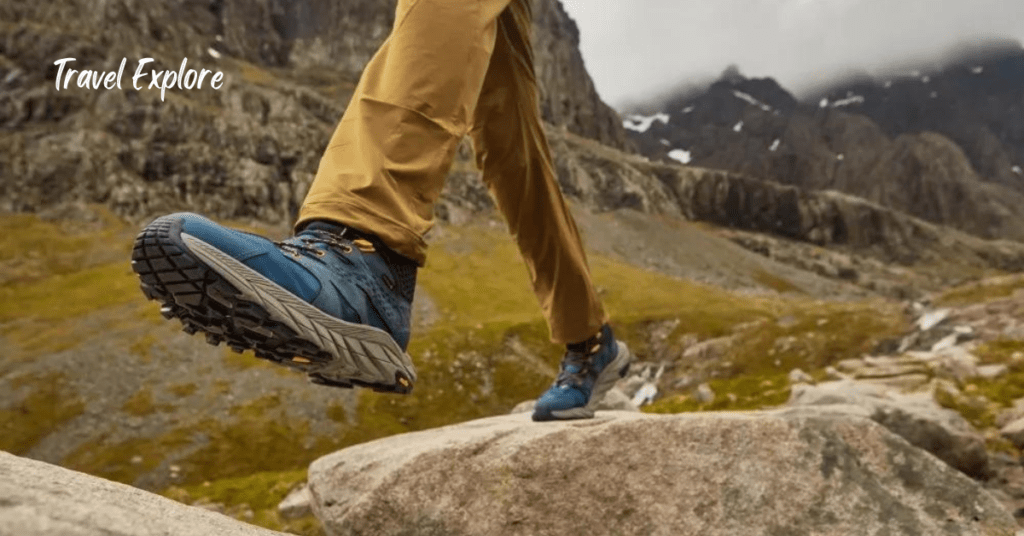
When it comes to hiking and camping in mountainous terrain, choosing the right footwear is crucial for both comfort and safety. In such rugged environments, you need shoes or boots that provide excellent traction, stability, support, and protection against rocks, roots, and uneven surfaces.
For mountainous terrain, hiking boots are generally the best choice. These boots typically have sturdy, high-cut designs that provide ankle support to prevent twisting or spraining on uneven or rocky trails.
Look for boots with durable materials like leather or synthetic fabrics, as they offer both longevity and water resistance.The outsoles of hiking boots should feature aggressive tread patterns and durable rubber compounds to grip various surfaces effectively, including loose rocks, gravel, mud, and wet terrain.
Vibram soles are a popular choice for their durability and reliable traction. Additionally, consider the midsole of the boots, which provides cushioning and support. A firm midsole offers stability on rocky terrain, while a cushioned one provides comfort during long hikes.
Some boots also come with features like shanks or plates in the midsole to add rigidity and protect your feet from sharp objects. When it comes to fit, ensure your boots are snug but not too tight.
Your toes should have room to wiggle, and there should be minimal heel lift to prevent blisters. It’s also essential to break in your boots before embarking on a long hike to avoid discomfort or hot spots.
Finally, don’t forget about socks. Choose moisture-wicking, cushioned socks made from materials like merino wool or synthetic blends to keep your feet dry and comfortable throughout your adventure.
In summary, for hiking and camping in mountainous terrain, opt for sturdy hiking boots with ankle support, durable outsoles, supportive midsoles, and proper fit. Combined with the right socks, these boots will provide the traction, stability, and protection you need to tackle challenging trails with confidence.
Weather Considerations
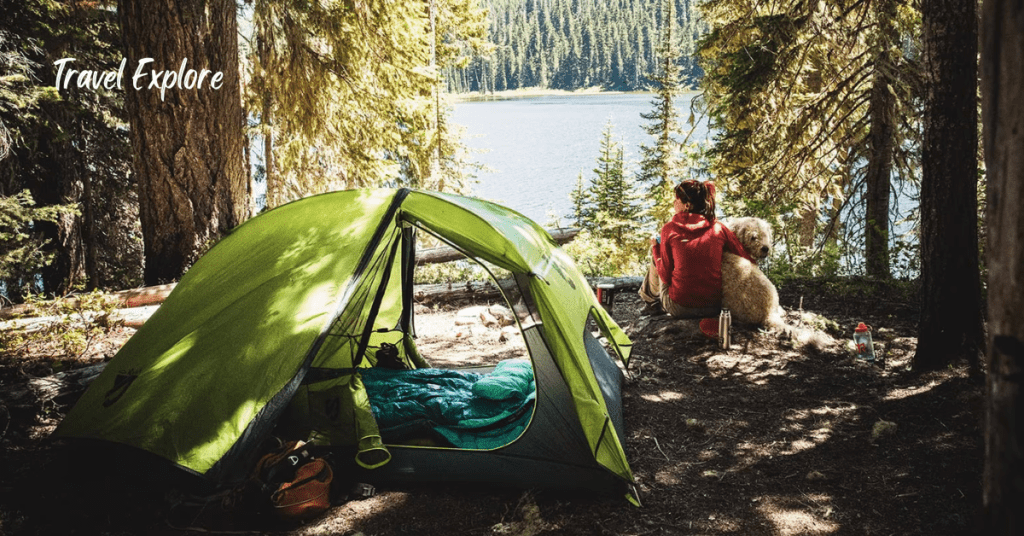
Weather plays a significant role in determining the most suitable footwear for hiking and camping. Your choice of footwear should provide adequate protection and comfort in various weather scenarios.
Dry and Hot Weather
In dry and hot weather conditions, selecting the right footwear for hiking and camping is crucial for comfort, performance, and safety. When the temperatures rise and the terrain becomes arid, your footwear needs to provide adequate protection, support, and ventilation to keep your feet cool and dry while navigating rugged trails and uneven terrain.
For such conditions, a pair of hiking boots or shoes designed specifically for hot weather would be ideal. Look for options made from breathable materials like mesh or lightweight synthetic fabrics that allow air circulation, preventing your feet from overheating and minimizing the risk of blisters or discomfort caused by sweat accumulation.
Opt for footwear with ample cushioning and support to absorb impact and provide stability on rocky or uneven surfaces. A sturdy sole with good traction is essential for maintaining grip on dry, dusty trails or slippery rocks, ensuring you stay steady on your feet even in challenging terrain.
Consider features such as toe protection and ankle support, especially if you’ll be tackling rough or steep terrain where stubbing toes or twisting ankles are potential risks. Additionally, choose footwear with quick-drying properties to help manage moisture and sweat, keeping your feet dry and reducing the likelihood of fungal infections.
Some hikers may prefer lightweight hiking shoes over traditional boots for hot weather conditions, as they offer similar support and protection while being more breathable and flexible.
However, the choice between boots and shoes ultimately depends on personal preference, the intensity of your hiking or camping activities, and the specific demands of the terrain you’ll be traversing.
Regardless of the style you choose, always ensure your footwear fits properly and provides adequate arch support and room for your toes to move comfortably. Breaking in your hiking footwear before embarking on a long trek is also recommended to prevent discomfort or blisters during your outdoor adventures.
Rainy and Wet Conditions
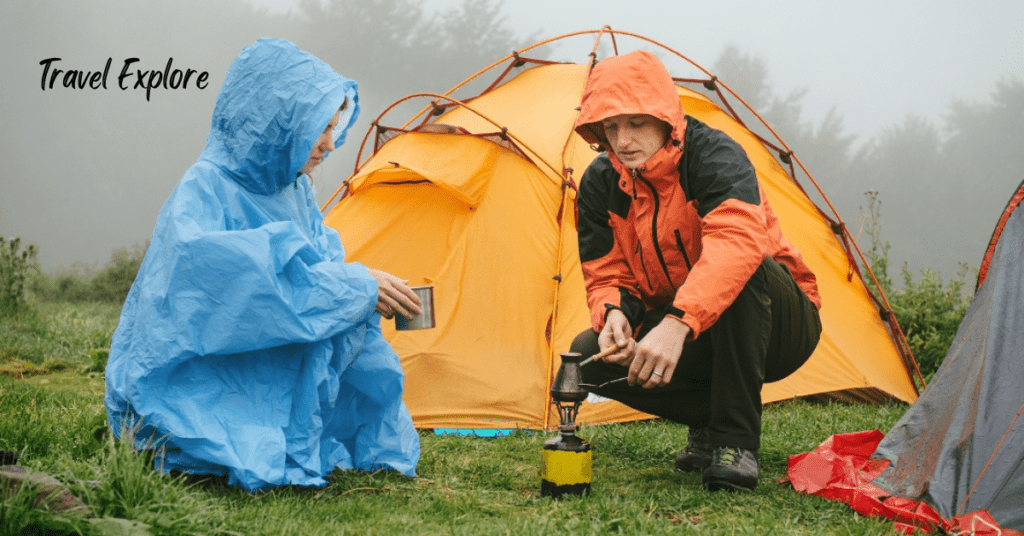
When it comes to hiking and camping in rainy and wet conditions, having the right footwear is crucial for comfort, safety, and overall enjoyment of the experience. The ideal footwear for these conditions should offer a balance of waterproofing, traction, support, and breathability.
Firstly, waterproofing is paramount. Look for hiking boots or shoes made with waterproof materials such as Gore-Tex or eVent membranes. These materials effectively block water from entering while allowing moisture from sweat to escape, keeping your feet dry and comfortable throughout your adventure.
Traction is another important factor to consider. Wet terrain can be slippery and challenging to navigate, especially on steep or rocky trails. Opt for footwear with aggressive tread patterns and durable outsoles made of materials like Vibram rubber, which provide excellent grip on various surfaces, including wet rocks, mud, and slick trails.
Additionally, ankle support is essential for stability, especially when traversing uneven terrain in wet conditions. High-cut hiking boots offer superior ankle support and protection against twists and sprains compared to low-cut shoes.
However, if you prefer the flexibility of low-cut shoes, make sure they still provide adequate ankle support through features like reinforced heels and sturdy lacing systems. Breathability is often overlooked but equally important, even in wet conditions.
Waterproof footwear can trap heat and moisture inside, leading to discomfort and blisters. Look for shoes with breathable uppers and moisture-wicking linings that help regulate temperature and keep your feet dry from the inside out.
Footwear Features and Technologies

When shopping for hiking and camping footwear, it’s essential to consider various features and technologies that enhance performance and comfort.
Waterproofing
Waterproofing in hiking and camping footwear is crucial for ensuring comfort and safety in various outdoor conditions. When choosing the best type of footwear for these activities, several factors come into play.
Firstly, consider the terrain and weather conditions you’ll encounter. If you’re trekking through wet or muddy environments, waterproof footwear becomes essential to keep your feet dry and prevent discomfort.
Additionally, if you anticipate crossing streams or encountering rain, waterproofing will help maintain traction and stability on slippery surfaces. For hiking and camping, a popular choice is waterproof hiking boots or shoes.
These typically feature a waterproof membrane, such as Gore-Tex, which keeps water out while allowing moisture to escape, thus maintaining breathability. Look for models with durable materials like leather or synthetic uppers, as they provide added protection against abrasion and debris.
Another option is waterproof hiking sandals, which offer breathability and quick drying capabilities while still providing protection and support. These are ideal for warm weather hiking or water-based activities where you need the versatility of a sandal with the added benefit of waterproofing.
It’s important to note that while waterproof footwear can keep your feet dry in wet conditions, they may not be as breathable as non-waterproof options. Therefore, consider the climate and temperature of your hiking or camping destination to ensure your feet remain comfortable throughout your adventure.
Ankle Support
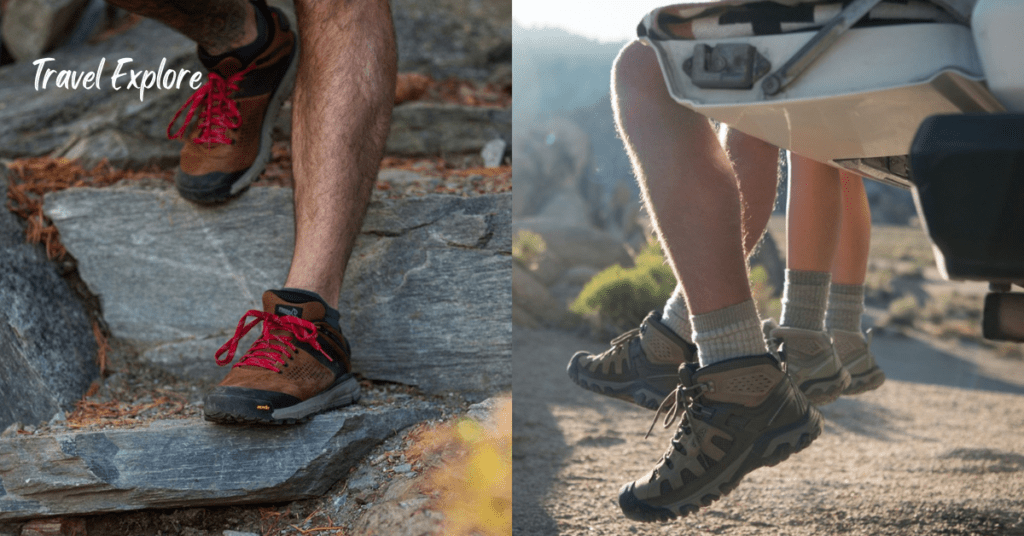
When it comes to hiking and camping, choosing the right footwear is crucial, and ankle support plays a significant role in ensuring stability and reducing the risk of injury on rugged terrain. Ankle support refers to the reinforcement provided to the ankle joint by the footwear, typically through higher-cut designs and sturdy materials.
For hiking and camping, boots with good ankle support are generally recommended over shoes or sneakers. These boots feature higher collars that extend above the ankle, offering additional stability and protection against twists and sprains, especially on uneven or rocky trails.
Materials such as leather or synthetic fabrics are commonly used in the construction of hiking boots, providing durability and support while remaining breathable to keep your feet comfortable during long treks.
Look for boots with reinforced heel counters and supportive midsoles, as these features contribute to overall foot stability and reduce fatigue over extended periods of walking. Furthermore, a properly fitting boot is essential for maximizing ankle support.
Ensure that the boot snugly encases your foot without causing discomfort or pressure points. Additionally, consider trying on boots with different lacing systems to find one that allows for a secure fit around the ankle.
Choosing the Right Fit
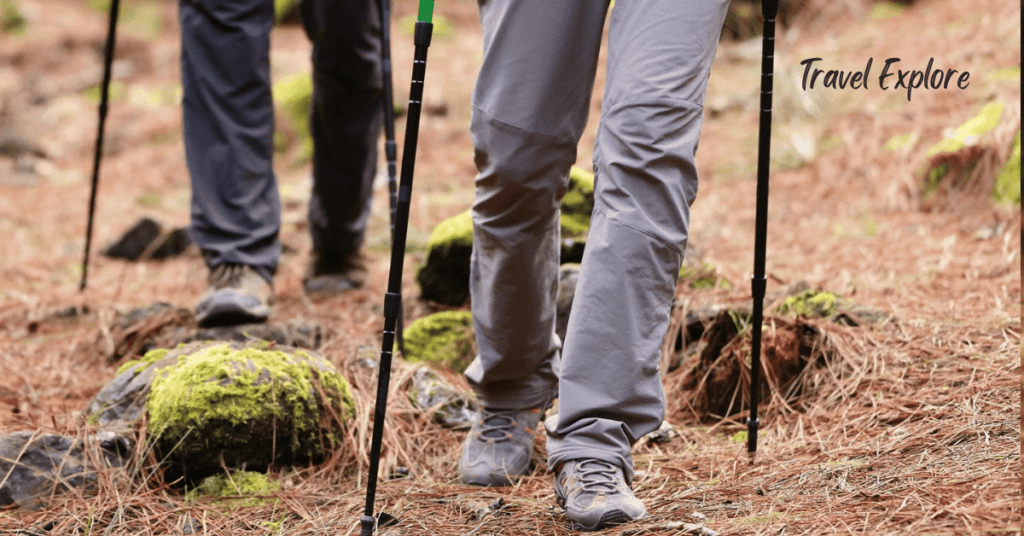
Ensuring a proper fit is crucial when selecting hiking and camping footwear. Ill-fitting shoes can lead to discomfort, blisters, and even injuries.
Try Before You Buy
When considering footwear for hiking and camping, durability, support, and comfort are paramount. One of the best options is hiking boots. These are specifically designed to provide stability and protection over rough terrain.
Look for boots with sturdy construction, such as leather or synthetic uppers with reinforced toe caps and ankle support. Additionally, hiking boots often feature specialized soles with deep lugs for traction on various surfaces, including mud, rocks, and slippery terrain.
Another excellent choice is trail shoes or hiking shoes. These are lighter and more flexible than boots, making them ideal for less rugged trails or for those who prefer a more agile feel. Trail shoes offer good traction and support, with some models featuring waterproofing for added versatility.
They provide sufficient protection while allowing for greater mobility, making them a popular option for day hikes or backpacking trips on well-maintained trails. For those looking for even lighter footwear, hiking sandals can be a suitable option in certain conditions.
Designed with open designs and breathable materials, hiking sandals offer excellent ventilation, which can be particularly beneficial in hot climates or when crossing streams and rivers. However, they may not provide as much protection or support as boots or shoes, so they’re best suited for less challenging terrain and shorter hikes.
Ultimately, the best type of footwear for hiking and camping depends on factors such as terrain, weather conditions, personal preference, and the duration of your outdoor adventure. It’s essential to try out different options and consider factors like fit, support, and traction before making a decision.
Investing in high-quality footwear that suits your needs can significantly enhance your outdoor experience and help prevent discomfort or injury along the way.
Consider Sock Thickness
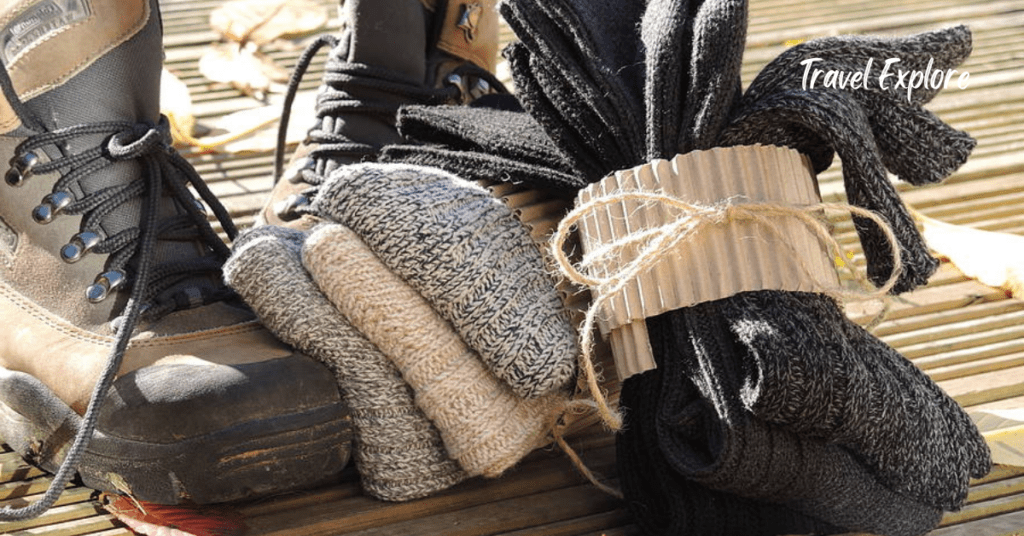
When it comes to hiking and camping, choosing the right footwear is crucial for comfort, support, and ultimately, enjoyment of your outdoor adventure. While many factors contribute to the suitability of footwear for hiking and camping, including terrain, weather conditions, and personal preferences, considering sock thickness is an often overlooked yet important aspect.
For hiking and camping, especially on trails with varying terrain and unpredictable weather, the best type of footwear is typically hiking boots or hiking shoes, depending on the intensity and duration of your hike.
Hiking boots offer excellent ankle support, stability, and protection from rocks, roots, and other hazards encountered on the trail. They are particularly beneficial for longer hikes or when carrying heavy packs, as they distribute the weight more evenly and reduce the risk of ankle injuries.
Hiking boots often have a stiffer sole, providing better traction on rugged terrain and preventing fatigue during long hikes. On the other hand, hiking shoes are a lighter and more flexible alternative, suitable for shorter hikes or trails with less demanding terrain.
They offer decent traction and protection while allowing for greater freedom of movement, making them a popular choice for day hikes or casual camping trips. Regardless of whether you opt for hiking boots or shoes, choosing the right sock thickness is essential for maximizing comfort and preventing blisters.
Generally, thicker socks provide more cushioning and insulation, which can be beneficial for colder weather or longer hikes. However, they may also increase the risk of overheating and moisture buildup, leading to discomfort and blisters.
For hiking and camping in moderate conditions, a medium-thickness sock made from moisture-wicking materials such as merino wool or synthetic blends is often the best choice. These socks offer a good balance of cushioning, breathability, and moisture management, keeping your feet dry and comfortable throughout your outdoor adventures.
Conclusion & Recap
Selecting the right footwear for hiking and camping is essential for a comfortable, safe, and enjoyable outdoor experience. By considering factors such as terrain, weather conditions, personal preferences, and intended use, you can choose footwear that meets your specific needs and enhances your adventures in nature.
With the knowledge gained from this guide, you’re now equipped to make informed decisions when selecting footwear for your next hiking or camping trip. Remember to prioritize comfort, support, and durability, and enjoy exploring the great outdoors with the perfect pair of hiking and camping footwear.
FAQS
Can I use regular sneakers for hiking and camping?
Regular sneakers may suffice for light hiking on well-maintained trails, but they lack the durability, support, and traction needed for more challenging terrain. For extended hikes or camping trips involving rough terrain, it’s best to invest in proper hiking footwear designed specifically for outdoor adventures.
Do I need different footwear for hiking and camping?
While hiking and camping often go hand in hand, the footwear requirements for each activity can vary. Hiking footwear focuses on traction, support, and durability for navigating trails, while camping footwear prioritizes comfort and relaxation around the campsite. Depending on your itinerary, you may choose to bring separate footwear for hiking and camping or opt for versatile options that serve both purposes.
How do I choose the right size of hiking boots?
Choosing the right size of hiking boots is crucial for comfort and performance on the trail. Start by measuring your foot size using a brannock device or ruler. Consider factors such as toe room, heel slippage, and sock thickness when trying on boots. It’s recommended to try on boots later in the day when your feet are slightly swollen to ensure a proper fit.
Can I wear sandals for hiking and camping?
andals can be suitable for hiking and camping in certain conditions, such as hot and dry environments or water-based activities. Look for hiking sandals with sturdy soles, adjustable straps, and toe protection for added support and safety on the trail.
How do I maintain and care for my hiking footwear?
Proper maintenance and care are essential for prolonging the lifespan of your hiking footwear and ensuring optimal performance on the trail. After each hike, clean off any dirt or debris from your boots using a soft brush or damp cloth.




